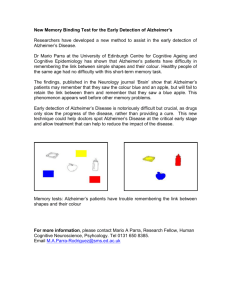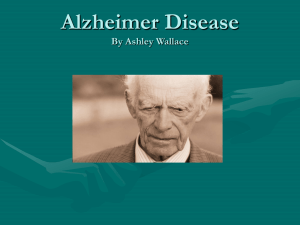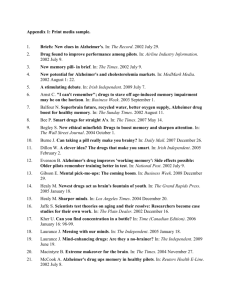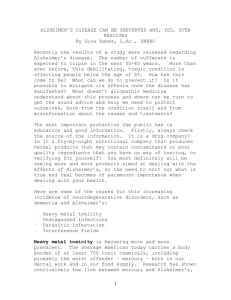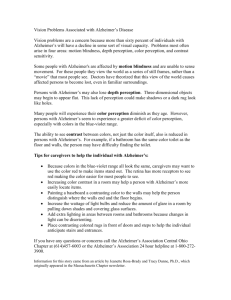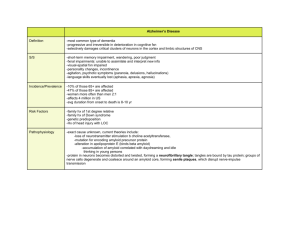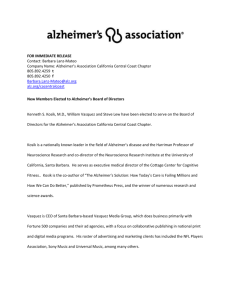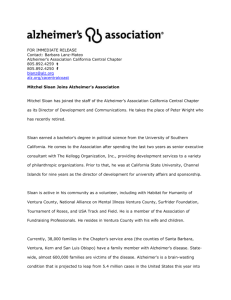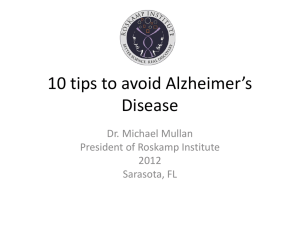File
advertisement
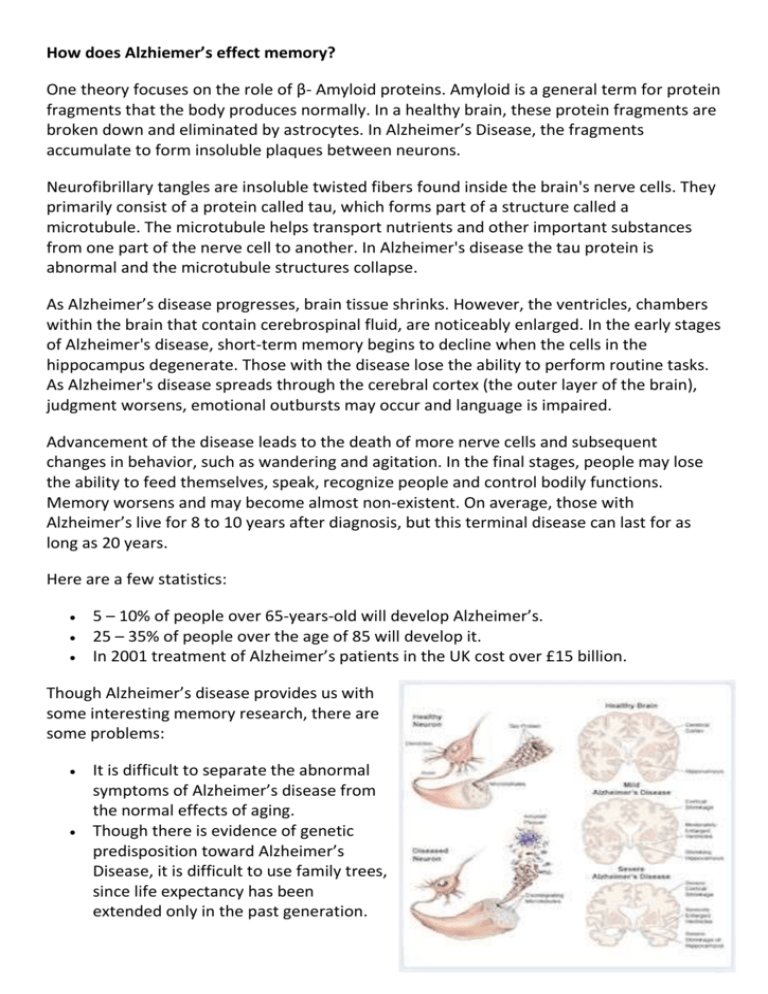
How does Alzhiemer’s effect memory? One theory focuses on the role of β- Amyloid proteins. Amyloid is a general term for protein fragments that the body produces normally. In a healthy brain, these protein fragments are broken down and eliminated by astrocytes. In Alzheimer’s Disease, the fragments accumulate to form insoluble plaques between neurons. Neurofibrillary tangles are insoluble twisted fibers found inside the brain's nerve cells. They primarily consist of a protein called tau, which forms part of a structure called a microtubule. The microtubule helps transport nutrients and other important substances from one part of the nerve cell to another. In Alzheimer's disease the tau protein is abnormal and the microtubule structures collapse. As Alzheimer’s disease progresses, brain tissue shrinks. However, the ventricles, chambers within the brain that contain cerebrospinal fluid, are noticeably enlarged. In the early stages of Alzheimer's disease, short-term memory begins to decline when the cells in the hippocampus degenerate. Those with the disease lose the ability to perform routine tasks. As Alzheimer's disease spreads through the cerebral cortex (the outer layer of the brain), judgment worsens, emotional outbursts may occur and language is impaired. Advancement of the disease leads to the death of more nerve cells and subsequent changes in behavior, such as wandering and agitation. In the final stages, people may lose the ability to feed themselves, speak, recognize people and control bodily functions. Memory worsens and may become almost non-existent. On average, those with Alzheimer’s live for 8 to 10 years after diagnosis, but this terminal disease can last for as long as 20 years. Here are a few statistics: 5 – 10% of people over 65-years-old will develop Alzheimer’s. 25 – 35% of people over the age of 85 will develop it. In 2001 treatment of Alzheimer’s patients in the UK cost over £15 billion. Though Alzheimer’s disease provides us with some interesting memory research, there are some problems: It is difficult to separate the abnormal symptoms of Alzheimer’s disease from the normal effects of aging. Though there is evidence of genetic predisposition toward Alzheimer’s Disease, it is difficult to use family trees, since life expectancy has been extended only in the past generation. 1.Underline key terms in this text. 2.Using the weebly ‘Link to memory’ describe the following types of long term memory. Procedural Episodic Semantic Watch this video http://www.youtube.com/watch?v=uAlkCMfTASQ Which types of memory are affected by Alzhiemers and which are not. How can you tell from this patients behaivour?
